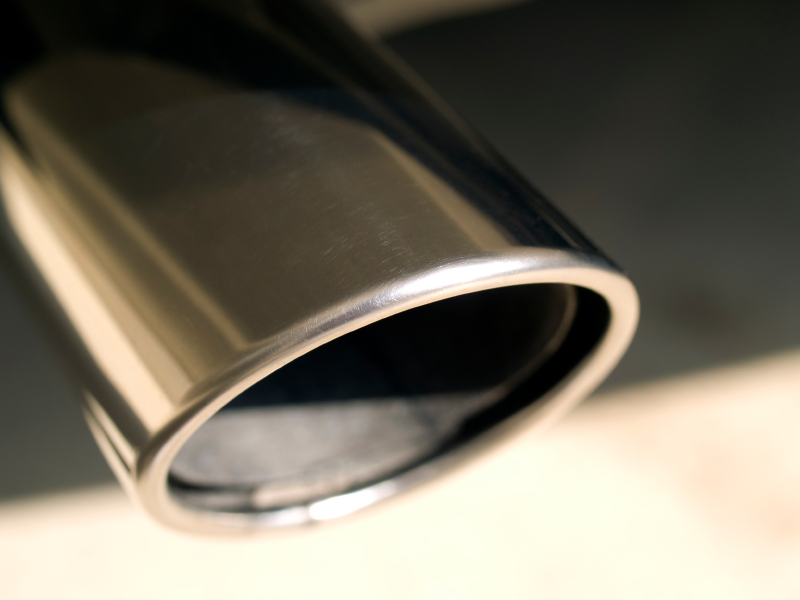
Chrome exhaust pipe
Anniversaries often provide an opportunity to reflect on important past events, review what has happened since, and reflect upon the future.
April 2 of this year marks the 10th anniversary of the Supreme Court ruling in Massachusetts vs EPA in which the EPA was forced to regulate carbon emissions.
The passing of this anniversary was marked by an April 21 presentation by lawyer James Milkey at the University Of Connecticut School Of Law conference on Climate, Carbon & Cars.
DON'T MISS: EPA website axes climate-change pages, because science contradicts Pruitt policy goals
Milkey argued the landmark case, on behalf of 12 states, in front of the U.S. Supreme Court.
During the April presentation, he reflected on the value of using the law as a tool for driving social change and urged the law students present to use their skills to help fashion a better world for all.
Around the year 2000, as chief of the environmental protection division of the state's Attorney General's office, James Milkey was trying to do just that.

Attorney James Milkey speaks at Univ of Connecticut Conference on Climate, Carbon & Cars, Apr 2017
The George W. Bush administration had walked away from its campaign promise to address carbon dioxide emissions, and under Bush, the EPA had declined to regulate those emissions.
Milkey was considering a couple of legal options to deal with the critical problem of carbon emissions.
One possibility was to file nuisance law suits against emitters to see if that could force change. A second possibility was to have the states sue the EPA to force them to do their job.
No state had ever filed this type of suit before—and it wasn’t clear if the states even had a legal right to do so. Milkey decided this approach had a better chance of success.
Once the case was brought, a lower court ruling issued a three-way split decision in which the judges couldn’t even decide whether the states had a right to sue. That left Milkey with a feeling that his strategy had failed.

Tesla electric cars on exhibit outside UConn Conference on Climate, Carbon & Cars, Apr 2017
Despite the lack of a clear decision from the lower court, the Supreme Court chose to hear the case anyway, so Milkey headed to Washington.
The case mostly hinged around the Clean Air Act and whether or not carbon dioxide was a pollutant that the EPA must regulate. But the issue of “standing" remained equally important.
The Supreme Court could have dodged a difficult question related to CO2 emissions by deciding, on a technicality, that the states didn’t have a right to sue.
The proceedings were not without their humorous moments, Milkey recalled.
At one point, the late Justice Antonin Scalia confused the troposphere with the stratosphere, causing Milkey to correct him: “Respectfully, Your Honor, it is not the stratosphere; it’s the troposphere.”
“Troposphere, whatever; I told you before I'm not a scientist," Scalia responded. "That's why I don't want to deal with global warming.”

Chrome exhaust pipe
In the end, the Supreme Court narrowly found in favor of the plaintiffs, ruling that they had standing to sue and that under the Clean Air Act, CO2 was an emission that must be regulated by the EPA.
That last part is critical because the EPA, in the past, has decided that while something may have been a pollutant, the Clean Air Act gave the agency leeway simply to decline to regulate it.
The Supreme Court ruling makes it clear that the EPA must regulate CO2. Since then, the EPA response has been slow, but progress has been made.
Under the Obama administration, the agency developed CO2 emissions standards for cars that paralleled NHTSA’s standards for fuel efficiency.
Two sets of regulations were proposed, put through the comment process, and adopted;
One for model years 2012 through 2017 became law in 2010. A second for model years 2018 through 2025 was adopted in 2012, though it contained a "mid-term review" of the final 2022-2025 rules at the start of the period.

Attorney James Milkey speaks at Univ of Connecticut Conference on Climate, Carbon & Cars, Apr 2017
Under new administrator Scott Pruitt, the EPA has reopened comments on that last set of rules after they were finalized by the agency in January following the July 2016 issuance of a Technical Assessment Report.
That report demonstrated in its hundreds of pages that carmakers had handily met rules for the several years, and at lower cost than the agency had projected.
Separately, the EPA has also developed the Clean Power Plan to regulate carbon emissions from power plants that the current Trump administration is now in the process of attempting to reverse.
The legacy of Mass. vs. EPA is pretty significant. It establishes a precedent for states suing the federal government to make them enforce federal laws.
It also clearly calls out CO2 as one of the emissions to be regulated under the Clean Air Act, and rules that the EPA may not decline to regulate it.
As we head forward into an uncertain future with the current administration, that legacy becomes even more important.
![Wells-to-wheels greenhouse-gas emissions from various vehicles [chart: Victor Ettel] Wells-to-wheels greenhouse-gas emissions from various vehicles [chart: Victor Ettel]](https://images.hgmsites.net/lrg/wells-to-wheels-greenhouse-gas-emissions-from-various-vehicles-chart-victor-ettel_100605684_l.jpg)
Wells-to-wheels greenhouse-gas emissions from various vehicles [chart: Victor Ettel]
The legal branch of the government may be the strongest tool available to continue to pursue climate change issues, just as it was during the Bush administration when Milkey and others first took up the cause of limiting carbon emissions.
Milkey told the students at UConn that now is a great time to be a lawyer—and that he wouldn’t be surprised to see new important lawsuits filed weekly against the current administration.
On the 10th anniversary of the decision, we can reflect on both the value in what the lawyers did and why their skills may be needed along the road ahead.
_______________________________________












